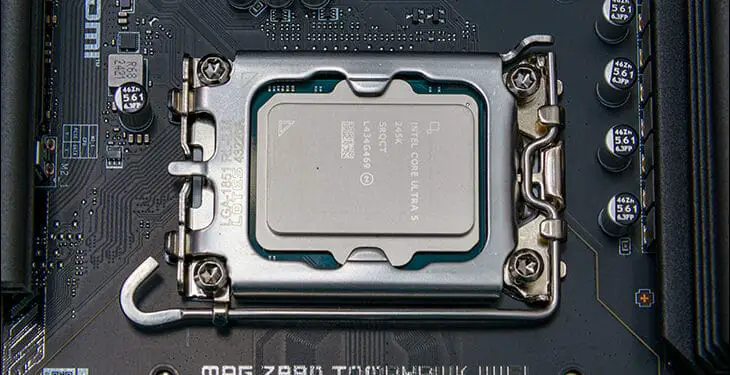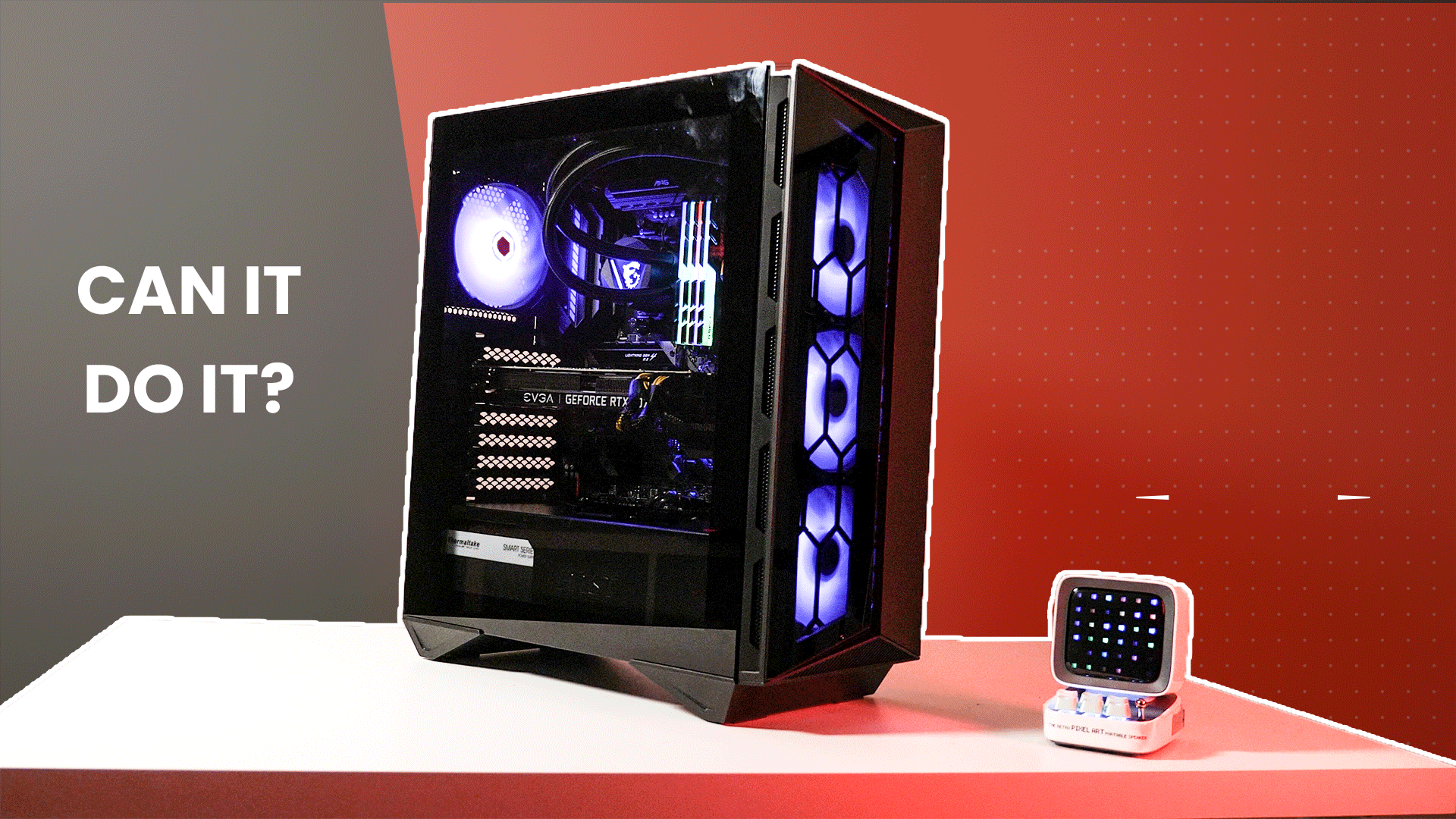As is our usual MO, we like we like to start with a few caveats. The first is that few ‘home consumer’ orientated applications are optimally multi-threaded enabled. It is getting better, and will continue to do so, but few home users will ever harness the full power of what Intel and AMD are offering in their latest generation of “desktop” line of processors. Furthermore, the number of buyers who do use optimized applications enough to justify picking their processor based on time saved… is only moderate in size. Those that can, have already moved on to ‘true’ workstation class processors.
The second caveat is we are not really the intended target for ‘consumer’ orientated CPUs. Our typical usage patterns / scenarios not only can, but typically do, max out workstation / HEDT / etc. processors. However, this second caveat is starting to become more and more… fluid – with more and more people (including ourselves) realizing that their usage scenarios are now starting to become adequately covered by these new ‘HEDT-lite’ consumer CPUs.
The third is simple. Nothing much has changed in the marketplace. The selfsame equations all consumers need to make before opting for Team Red or Team Blue last year basically apply this year. All that has changed is the amount of performance on tap.

(image courtesy of tenor.com)
In order to reduce the chances of a higher profit HEDT sale transforming into to a lower profit ‘consumer’ sale AMD still refuse to allow their consumer ‘Ryzen’ series to come with more than 16 cores. Yes, they are ‘Big’ cores which are all Hyperthread/SMT enabled allowing for (up to) 32 threads of processing performance. Which in turn offer more processing power than some early gen HEDT processors. However, for many “there is no replacement for displacement” and more ‘real’ cores will (almost) always beat a virtual/’hyper’ thread. For these buyers, Intel and their Core Ultra 200 series offers a processor with up to 24 real cores of raw processing performance. Real cores running at (up to) 5.7GHz. Once again, a virtual ton of performance is now widely available without HEDT / workstation pricing. Just as it was last year. One simply needs to pick their poison: more ‘Big’ cores but less total cores on tap versus fewer “Big” P cores but more cores overall.
What all this also means is that when it comes to heat, noise, and power consumption there is once again no clear decisive advantage to opting for one ‘team’ over the other… but AMD has once again failed to learn from past mistakes and are now firmly on the backfoot when it comes to heat and noise. Instead, AMD processors are still “designed” to ramp up the frequencies (and voltage) until they are running at 95 degrees Celsius.
 (image courtesy of KC Green of gunshowcomic.com)
(image courtesy of KC Green of gunshowcomic.com)
That is not sane. That is not sparta. That is a good definition of insanity.
In the past AMD fans, and marketing team, could point out that Intel ‘is just as bad’ and to a certain extent that is indeed still true. But only somewhat. Intel has finally gotten Speed Is King out of their heads and now offer both insane and sane power levels via a Tile powered by both P and E cores. The latter of which are insanely good at offering a lot of power but without creating a lot of heat (or noise) or consuming a lot of power. This flexibility is something AMD CPUs still natively lack. For our brothers and sisters living in countries with insanely high electricity costs… this difference could indeed tilt the scales into Team Intel’s favor. With that said it is not quite as clear cut as it was last year. Due to AMDs reticence to keep temperatures (and power consumption) firmly in check some motherboard manufactures are stepping up and allowing you to artificially limit this insanity in the BIOS. Even on older 7000-series processors. One just has to be willing to buy a new X870E motherboard to get it.
This segues nicely into the Zen 5 launch that was… rough to say the least. Arguably setting the bar even lower than it was before.
Before anyone starts writing a strongly worded email to us, think back. Zen was supposed to usher in a new era of CPU design. One where proponents of it said companies could be more agile and flexible in quickly meeting the needs of their consumers. What did we get? We got a cheaper to build (but not priced) Ryzen design that took multiple generations before it would not lose its mind due to Latency Storms. That even then just combined lego blocks of compute cores with a big ol’ monolithic styled SoC chiplet. Yes. The best AMD was able to do was include a good iGPU and revitalize the APU market. Albeit at massive costs to overall computing power
Fast forward a couple more years and while Intel was in the midst of “10nm++++ Gate” AMD gave us… mediocre upgrades to their existing Ryzen design. The best they could do was glue on a stack of cache to one of the two CCDs and create X3D V cache, which while arguably are the best Ryzen’s ever… do suffer from latency storms associated with transferal of data in that cache to the other CCD. Yup. Two steps forward, one traumatic brain injury backwards.
Then we arrive at the year 2024. Aka Year of the Clown World 3.0. An absolute dumpster fire of a year. Bud light deciding to wage war on their own buyers. The gaming industry self-destructing due to micro-transactions and DEI/ESG hiring practices. Software giants like Adobe “borrowing” artist’s digital artwork to train their AI… and not allowing said IP owners to log in to disable this blatant IP infringement without first authorizing the past infringement first! Windows 11 is shaping up to be the new Windows 8. Nvidia is still hell bent on making their… “less than impressive” connector work (at least MSI is making PSUs that have the connector color coded to visually tell you when it is not fully seated… and helping to keep you from burning your house down). Even Alphabit deciding to wage war on ad-blockers. Oooof, what a year!
Then there is Intel.
Sigh.
Nu-Blue Intel.
Intel is in the midst of a self-inflicted fabrication and microcode scandal that is rocking them to their Core (…Ultra). So much so that if there was ever a time for the Goliath of the industry to be taken down by a plebe and their pebble… it was now. What did AMD do with the gift that was handed to them by the gods of processors? Even in the face of failure rates quickly trending upwards…. they doubled down on having their cores boost until they hit their TJMax and stay there. Routinely. As if that is a good idea silicone circuitry longevity. Furthermore, the Ryzen 9000 series pre-release hype was insane</> with everyone hoping for “A Little Good News (today)”.
Then it launched. Without X3D models we might add, and… the results were quickly tabulated and a consensus was reached. It was a dumpster fire. A dumpster full of used baby diapers that were purposely set on fire… with AMDs fire department spreading copium so hard and fast that it would make a fire hose blush at the sheer velocity and capacity (and audacity) of AMD. Yes, the copium was so strong and so thick that AMD fans straight up convinced themselves that Microsoft was at fault for having (well in the past) enabled security features in their OS… and that turning said security off to get the promised double digit performance gains was not only worth it but a good idea.
Mix in excuses about driver package’s improperly uninstalling causing Ryzen 9000 to be not worthy of the DBZ meme “Over 9000!” and you have defeat firmly snatched from the jaws of victory. So much so, it is to the point that Team Red’s best value options are still their last generation of CPUs… or would be if the gods of the market did not force a price increase on them. Making the 9000 seem… better? Less terrible?… A better value proposition? Pick your poison and flavor of Kool-Aid as it all will still taste like a mixture of ashes and ClownWorld “Faygo Moon Mist” Soda to us.
This sorry tale of woe brings us to Intel and their 15th Generation Core -iiii… err… umm… (quickly checks notes)… “Core Ultra 200 series” launch. Which is “3nm” and not “2nm” based… and even calling it 3nm versus the 2nm that was promised is stretching things. Since no two companies measure things the same anymore this last minute substitution is more like Intel delivering a 4nm based processor vs. the promised Intel 2nm. Yes. “Not a great plan” memes do spring to mind.
Thankfully that is about the only major bad news to be reported with the new Core Ultra 200 series. We do see an overall (albeit just barely) double digit performance boost over the 14th series. We do see temperatures starting to trend downward nicely. We even see the option for major reduction in power consumption being baked into the cake. Its “Saul Good Man”. Well… kinda… sorta all good. For enthusiasts willing to pay 9-class prices the Ultra 9 285 K’s gaming performance is a bit all over the place. Games that are nicely multi-threaded will see a bump in FPS. Those that are not? Will not. It is as simple as that.
They will not see the expected, yearly performance increase because of the massive reduction in (especially single threaded) frequencies that the change to TSMC 3nm brought with it. This lowering of 9-class “low active core count” frequencies is just too great to be easily overcome by the P-Cores improved IPC. Conversely, the minor reduction in “all core” frequencies is not enough to remove too much of the shine off Arrow Lake’s IPC gains. Thus PC gaming performance is all over the place. Thankfully, outside of PC gaming scenarios things are much rosier. Due in large part to the E-Cores major boost in performance the overall improvement in general purpose computing (aka day to day tasks) is usually large enough to be noticeable. Given the fact that its these E-cores doing the heavy lifting to net Arrow Lake its performance gains this is not the ‘Year of the Lion (Cove)” and instead is “Year of the Big Blue Sky(mont)”.
What all that adds up to is that for PC Gaming enthusiasts, and their strong dislike of E-Cores, “Better dead than Red” is not a good motto to have for this generation. Additionally, Team Red’s Ryzen 9 class of 3D V cache processors may in fact be serious competition for Intel’s 285 K. We say ‘may’, as we are talking about AMD and until they release the higher 9000 X3D options it is possible that they decide it’s a good time to promise hopium but deliver copium to their fans…. Again. So time will tell, but either way, the Core Ultra 9 is a serious processor meant for both serious and not so serious scenarios. Albeit with the glaring exception of avx512 scenarios where Ryzen still dominates.
While that is a ‘win some, lose some’ proclamation on the Core Ultra 9 class of 200-series of processors, we turn our attention to the Yeoman Class of the CPU world. Be it Team Red and their Ryzen 5, or (the real) Big Blue and their Core Ultra 5. This class of CPUs is what makes or breaks quarterly profit reports… and here Intel has absolutely knocked it out of the park.
With Core Ultra 5 245 K simply dominating the Ryzen 5 class processor options there is virtually no reason to opt Team Red. Bluntly, and unironically, stated the Core Ultra 245K is just an absolute unit compared to the Ryzen 5 when it comes to processing power. No matter if it is PC Gaming or typical work load performance the Intel Ultra 5 is 99 times out of a 100 a better choice. It is better because it not only has more cores on tap than the Ryzen 5… it has more threads. In other words, the sky appears blue, water makes things wet, and a 6P + 8E core option(s) smokes the 6 core w/ 12 threads option(s). Mix in the fact that those E-Cores are not only powerful but sip power and there is really no good reason beyond being a hardcore Team Red fan(boi) to purchase the Ryzen 5. Yes, even the age old “AMD is a better value” argument falls flat on its face this generation. It is indeed true that the Intel option is more expensive (MSRP of 309 vs 279)… but that difference in performance is simply too great to ignore.
Now with all that said, it is not all sunshine and rainbows for Intel. They did not get the Ryzen 9K kill shot that Intel arguably needed. Yes, Intel increased IPC nicely on the P-core side of the equation but the reduction in frequency has cut into overall performance. Enough reduction to at the very least obfuscate the IPC gains… and sometimes even nullify any noticeable improvements over 14th generation and Ryzen 9000 series of options. That is not acceptable on a ‘9-class’ priced product. Yet here we are. Thankfully the 5-class improvements are better and much more than just acceptable. They are excellent. So Intel should thank his Noodly Appendage for whomever came up with the Ultra 5 (and Ultra 7) design(s) as they are going to be out and out carrying this generation.
Moving on to issue number two. The optics of the introduction of Core Ultra to desktop buyers also leave a bit to be desired. Put simply, it is now three generations in a row where the total core count has not improved for either the 5 or 9 series… and overall thread count has actually gone down. Noticeably down. It is this combination of same core count, lower total tread count, with sometimes only mediocre single thread improvements that will result in the already uphill battle Intel is facing being that much more difficult that it should have been.
Yes. That second complaint is nitpicking, but Intel is going to be under the microscope for this generation… and the next. They will have to work twice as hard to be seen as half as good as they used to be. That is the reality of the situation Intel put themselves in. So what should have been a slam dunk, mic dropping release has been somewhat tarnished. Certainly not enough to write off the entirety of Core Ultra 200-series, but maybe enough for already low sales of the 9-class processors to be even lower than they otherwise could/should be. Put another way Intel has improved and does have a better CPU series launch than the Ryzen 9000 series suffered from… but that is not a bar that should anyone should be tripping over.








